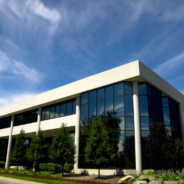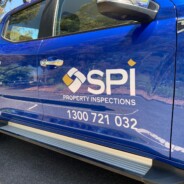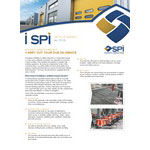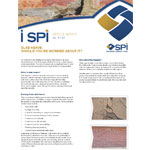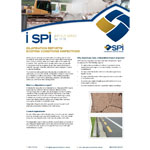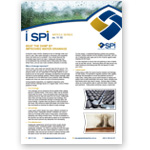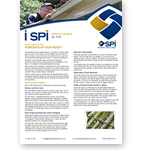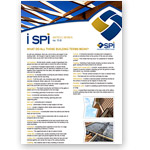Articles
Building Condition Reports and Make Good Clauses
Are you about to sign a commercial lease? A ‘make-good clause’ can be a contentious issue for both tenants and landlords. If there is a clause in your lease stipulating that you return the premises to the standard shown in a condition report, SPI Property Inspections can assist. Our comprehensive building condition reports ensure both parties have a record of the property’s condition at the start of the lease. The report can provide an accurate point of reference at the conclusion of the tenancy arrangement and can be used as supporting...
Read moreStreet Asset Surveys – Vital for your Project
Street asset surveys are carried out to record the condition of local infrastructure such as roads, footpaths, kerbs, street lighting and bus shelters. They can be done before the start of a construction project as well as when the works are complete, in order to capture any impact the project has had on local street assets. SPI Property Inspections carries out four types of street asset surveys, depending on the requirements of the project and client: Video A high definition video of kerb and channels is captured via vehicle-mounted cameras...
Read moreSPI Property Inspections Has Resumed All Inspection Types!
We are excited to announce that we have now resumed ALL types of inspections: Commercial pre-acquisition and pre-lease inspections, Commercial pre-sale inspections Commercial building condition reports Dilapidation reports/building condition surveys SPI has a COVID-19 Safety Plan and our inspectors adhere to all social distancing and hygiene rules. Call SPI on 1300 721 032 or email info@spipropertyinspections.com.au
Read moreEssential Safety Measures: Know Your Obligations
Essential Safety Measures (ESM’s) are vital for the life, safety and health of people over a building’s duration. It’s important for the owner of the building to be informed of their obligations regarding maintenance of the ESM’s in their buildings. The type of maintenance required depends on the complexity of the safety measure and will differ depending on the use and type of building. Maintaining ESM’s will help to ensure: the safe evacuation of all occupants of a building in an emergency the control of any life-threatening...
Download PDF version Read moreBuilding Condition Reports: Carry Out Your Due Diligence
Arranging a Building Condition Report for a commercial property is a wise and worthwhile investment. It’s imperative to know the overall condition of the building and whether it complies with building regulations. By having an independent review of the overall structure, you will be better informed about what you’re buying or leasing and it will give you peace of mind when making that transaction. You’ll also be well placed to negotiate the final price or terms. What Does A Building Condition Report Involve? A comprehensive...
Download PDF version Read moreSlab Heave: should you be worried about it?
For those who are building a new home, slab heave is an issue about which you should be aware. While not common, slab heave is a serious problem. The cost of fixing it can be significant and in some cases, it may be necessary to seek legal advice for compensation. What is slab heave? Slab heave is a result of uneven movement of a house footing and slab. Uneven changes in ground moisture can also lead to slab heave, where clay soils swell (and expand) when they become wet, and shrink when they dry out. The level of damage to your home can...
Download PDF version Read moreDilapidation Reports/ Existing Conditions Inspections
When you are carrying out construction or building work in close proximity to other properties, there is the chance that issues might arise, such as cracking, leaking or deterioration in the adjoining properties. This could be due to vibration from heavy equipment or excavation work for example. Even if the construction work is carefully managed, it has the potential to cause damage to nearby or adjacent buildings. To protect yourself against possible disputes or claims from your neighbours, you should consider a Dilapidation Report –...
Download PDF version Read moreBeat the Damp by Improving Water Damage
During the cooler months, keeping an eye on drainage under your home is vital. Often water drainage is overlooked until substantial heavy rain alerts you to a problem. If you should discover this, immediate steps need to be taken. Inadequate drainage that is not addressed may eventually lead to rising damp and rotting timber floors, and can also make conditions conducive to attracting termites. Why is drainage important? When it rains, some water will naturally seep into the ground. The rest of the water will make its way through...
Download PDF version Read moreHow safe is your roof?
Roof problems are not always obvious – let’s face it, you don’t often get up on your roof to check it, if at all. Besides, your roof may be hard to access, or you’re not even sure where to look. So you may not be aware that damage has occurred, or issues are building up. Problems, if not addressed early, can become expensive. Remember that a roof is at its best at the time of installation. From then on, it is subject to the physical elements and age. While a good roof is designed to withstand the forces of nature, and shaped to...
Download PDF version Read moreWhat do all those Building Terms mean?
As with any profession, there are a lot of terms and ‘jargon’ in the building trade. We thought it might be helpful to list some of the common ones, so you don’t have to feel out of your depth. Ant Capping Termite barrier (shield), usually of galvanised iron, placed over piers and dwarf walls to control the entry of termites. Arch A structure of wedged shaped blocks, or square blocks with wedge shaped joints, over an opening so disposed as to hold together when supported from the sides, and capable of carrying a load over the...
Download PDF version Read more







